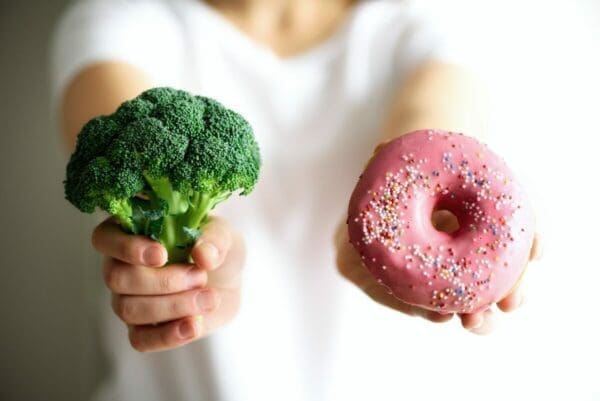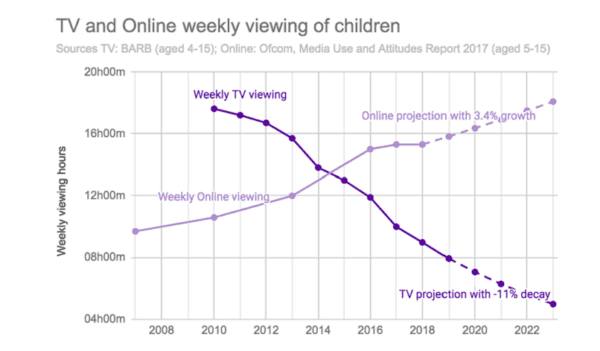What’s All the HFSS About? The biggest single intervention into UK diets since rationing during the Second World War.
HFSS: High in Fat, Salt or Sugar foods – really trips off the tongue, doesn’t it?! Clearly the product of some fiendish dystopian Government department with prodigious lashings of added committee meetings rather than the output of an uber-cool, on-trend marketing agency.
Think more Gordon Ramsay and Kitchens from Hell rather than the quiet English gentility of Bake Off.
And it’s coming to a supermarket near you, that you deal with……. very, very soon.
What Will the Proposed HFSS legislation Mean for Siting and Promotions?
What Does HFSS Mean?
However, on a genuinely serious note and Coronavirus aside, obesity is one of the biggest health problems currently facing the UK. We are quite literally sitting on a demographic time bomb with our children’s health and well-being.
Over a fifth of children in England are obese or overweight by the time they start primary school at the age of 5. This rises to more than one third by the time they leave primary school at age 11 (Gov.UK: Dept of Health & Social Care).
The proportion of children who are overweight or obese in the UK overall is among the highest in Western Europe. Children are becoming obese at earlier ages and staying obese for longer. Among adults, around two-thirds are above a healthy weight, and of these, half are living with obesity.
This challenge disproportionately affects children in the most deprived areas. Those growing up in low-income households are more than twice as likely to be obese as those in higher-income households. Children from black and minority ethnic families are also more likely than children from white families to be overweight or obese and this inequality gap is increasing.
Obesity and Other Illnesses
Obesity damages children’s mental health. Those who are overweight or obese more likely to experience bullying, stigmatisation, and low self-esteem. It also puts their physical health at risk. Obese children are more likely to develop Type 2 diabetes in childhood and are far more likely to go on to become obese adults, with a higher risk of developing life-threatening conditions such as some forms of cancer, Type 2 diabetes, heart disease, and liver disease.
Obesity also has huge costs to society. It has been estimated that the indirect cost to the UK economy from obesity-related conditions is around £27 billion per year. Many estimates place this figure as much higher. It is also estimated that obesity-related conditions are currently costing the NHS alone £6.1 billion per year.

Time for HFSS Action (Read the Government’s Article about HFSS)
We have already had high in fat, salt, and sugar snack food bans from vending machines in schools plus the highly successful Jamie Oliver healthy school meal interventions.
Additionally, ‘traffic light’ nutritional labelling and widespread product reformulating have hugely reduced the number of processed sugars and saturated fats in our day-to-day food products.
Now the UK food industry faces an ‘adults only’ 9pm watershed advertising ban on high fat, salt, sugar foods, if not a total ban should the Government get its intended way.
In addition, the Government has just finished consulting (mid-Feb 2021) on plans that would herald the biggest single intervention into UK diets since rationing during the Second World War. The legal restriction on the siting and promotion of high fat salt and sugar food products.
HFSS legislation planned to go before Parliament this Spring (2021) for passing into Law for April 2022 will formally ban the specific siting in store of foods high in fat salt and sugar. Moreover, it will ban ‘volume’ driven promotions such as multi-buys and ‘extra free’.
Given that promotions on food and drink in the UK are amongst the highest in Europe, and account for some 40% of all food and drink purchases, the potential impacts on retailers’ current business models are enormous.
Sticky Learning ® is 7 times more effective than 1-day training courses. Plus, you will get a Chain of Evidence proving your Return on Investment. Discover soft skills training that changes behaviours long term.

What Are HFSS Foods?
The list of high-fat salt sugar foods that will be covered by the new HFSS regulations is enormous. Driven by the Department of Health’s own Nutrient Profiling Model (see Appendix 1), prepacked food and drink in the following categories will be in the scope of the restrictions:
Soft drinks, cakes, chocolate confectionery, sugar confectionery, ice cream, morning goods (for example pastries), puddings, sweet biscuits, breakfast cereals, yoghurts, milk-based drinks with added sugar, juice-based drinks with added sugar, pizza, ready meals, meal centres, including breaded and battered products, crisps and savoury snacks, chips and similar potato products.

‘Staple’ items such as butter, spreads, oils, and the like will be exempt from the restrictions (The legislation is still in draft form and items are described ‘in scope’, and therefore we have deduced that these products by not being mentioned are therefore out of scope).
The restrictions will also apply to free refills of sugar-sweetened drinks in the out-of-home sector. For example, restaurants, coffee shops etc.
So that’s basically the whole of the Impulse category, plus sizeable chunks of Bakery, Prepared Chilled, Processed Meats and Frozen Foods that will have to learn to operate very differently in the years to come.
About Change for Traditional Business Models
Whilst varying by retailer and channel, the proposed HFSS 2022 legislation will restrict supermarkets’ ability to site and promote something like 25% plus of their volume sales, with equally huge ramifications on their supply base.
All stores selling products in these categories that are more than 2000 sq. foot in selling area, or have more than 50 staff, or belong to a franchise or symbol group are covered.
So that’s 10,000 plus stores across the UK. Effectively, only small, truly independently owned small convenience stores exempt.
All stores affected that sell products in the high-fat sugar salt targeted categories will no longer be able to site ‘unhealthy’ products in the store entrance, on aisle ends or within 2m of any checkout (see Appendix 2).
Additionally, ‘volume’ driven promotions will be banned. So, that’s Extra Free, 2 For’s and Multibuys and the like (see Appendix 3).
The new rules will also apply to any online presence the retailer may have. For example. landing pages, pop up banners, first in search results etc.
Winners and Losers
Most retailers and suppliers are rapidly trying to get their heads around the implications of the new proposed HFSS legislation. If you are a retailer or supplier reading this and haven’t yet started planning then you need to and fast!
The new rules could be in place in a little over 12 months’ time. That is not exactly a very long time to totally reconfigure your complete product, sales, merchandising, marketing and promotional strategy for products that could account for somewhere around a quarter of your turnover!
Location, Location, Location
Standard shelf space will become a critical battleground as suppliers jockey for the best position and aim to leverage the maximum linear footage from existing category space on shelf.
With promotions accounting for 50% plus of Impulse category volume, for many suppliers and retailers alike, making the existing category shelf space work harder is going to be a critical challenge as the legislative changes are implemented.

Expect some ‘healthy debate’ (pun very much intended!) around shelf space allocation as the inevitable Category Management range reviews start to review and plan for the changes.
Branded suppliers will be keen to maximise their proportion of in category shelf space. You can bet that the Buyers will be keen to encourage equally healthy and robust negotiations around final space allocations. So, it’s out with your cheque books (again) people!
Quite how standard category shelf space will cope with the extra volume demands made of it will be interesting. Although, I guess that the whole point is that the changes will eventually drive demand down for these ‘unhealthy’ ranges to a point where the wider population health targets are met.
Where is the HFSS Upside?
The second biggest area of challenge will be just what the hell to do with all that discretionary promotional and feature space freed up by the contraction of high fat salt sugar food products to the shelves.
What an opportunity for non-high fat salt sugar foods, or shall we call them ‘healthy’ or ‘normal’ products, to massively ramp up their space and sales volumes.
However, the ‘Impulse’ category is so named for a very good reason – it meets the needs of shoppers who want something to treat themselves with. Something perhaps a bit indulgent, something they all probably intrinsically know is not good for them but what the hell………
Do we, therefore, really want to treat ourselves to yet another bag of brown wholemeal pasta? Or, give our kids a fun whole grain and raw sugar cereal bar shaped like an Easter Bunny, rather than that delicious chocolate Easter Egg they (and you!) really wanted?
Quite where all the products and all the promotional volume will come from to fill the gaps from the removal of foods high in fat, sugar, and salt is probably the biggest conundrum facing the supermarkets.
The supermarkets’ conundrum is a supplier’s opportunity. Supermarket buyers will be crying out for new LFSS – low fat, sugar, and salt products. Products that come in under the Nutrient Profiling Model radar that crucially consumers want and love and want to buy repeatedly and in volume.
A HFSS Call to Action
Foods high in fat salt and sugar are no longer the subject of arcane political debate. Changes are going to happen and happen very soon.
The consultation period has closed. The time for talk is at an end.
Inevitably, the vast bulk of the current proposals, as outlined, will find their way into the legislation. It will herald a seismic shift in the way retailers’ site and promote huge swathes of the products in their stores.
It will mean significant short term financial pain for many suppliers. Suppliers who will have to radically adapt if not rip up their current category growth strategies.

For others, it will be a huge, one-off opportunity to seize swathes of high traffic, high volume promotional and discretional space. New areas from which to sell bucket loads of healthy, low fat, low salt and low sugar products.
The Multi-Billion Pound Question?
All these changes herald the biggest intervention by the Government in our lives since, well…. last year.
We, as a nation, almost universally accepted and complied with draconian restrictions on our lives and liberties to fight a deadly virus.
Will we, however, be quite so willing to give up our cheap bottles of fizz, tasty packets of crisps and yummy chocolate bars quite so easily?
Appendices
Source: ‘Consultation on restricting promotions of products high in fat, sugar and salt by location and by price’.
Department of Health & Social Care. January 2019
Appendix 1
The 2004/5 Nutrient Profiling Model:
The 2004/5 Nutrient profiling model (NPM) was developed by the Food Standards Agency (FSA) to provide Ofcom, the broadcast regulator, with a tool to differentiate foods on the basis of their nutritional composition. Ofcom uses the outputs from the model to regulate the television advertising of foods to children.
It scores foods based on their nutritional content. The nutrients considered are split into two categories – A and C.
The score for ‘C’ nutrients is subtracted from the score for ‘A’ nutrients to give the final score.
A higher score indicates a less healthy food.
‘A’ nutrient consists of energy, saturated fat, total sugar and sodium.
‘C’ nutrients consist of fruit, vegetables and nut content, fibre and protein.
Therefore, a food scoring highly on ‘A’ nutrients is not automatically classified as less healthy. It is only if it additionally scores little on ‘C’ nutrients.
Foods scoring 4 or more points, or drinks scoring 1 or more points, are classified as ‘less healthy’.
These ’less healthy’ products provide the definition for HFSS food and drink used in this consultation.
All food and drink are scored, there are no exemptions.
Appendix 2
HFSS Guidelines: Types of Location Promotions in the Retail and Out of Home Sector:
- Checkout area. The till point or a self-checkout area and the surrounding floor space area. This also includes the queueing areas leading to the till point or self-checkout.
- End of aisle display. The point of purchase advertising of products placed at the ends of shelf rows in stores. Or, those on separate units adjacent to the ends of shelf rows.
- Store entrance display. The display of products on units/shelves placed at/in the vicinity of the store entrance(s). Including, in front of or surrounding the entrance(s).
Under the proposals set out in this consultation, HFSS food products should not be placed at the above locations in retail and out of home settings.
Appendix 3
Types of Price Promotions in the Retail and Out of Home Sector:
Pricing promotions fall into two main categories:
- Volume offers.
- Reference pricing.
Volume Offers Include:
- Multi-buy offers. Where the discount is obtained by purchasing more than one unit. Such as, in ‘buy one get one free’ and ‘3 for 2’ offers.
- Combination offers. Where a discount is given when individuals purchase a specified combination of products. As is the case in meal deals, for example.
- Linked offers. Where the consumer is offered a free or discounted product when they purchase another product. For example, a half-price drink when they buy a sandwich.
- Extra for the same price/extra free. When the consumer is given more for the same price, such as 50% extra free.
The second category of price promotions is reference pricing. I.e., pricing that demonstrates good value by referring to another price, typically of higher value.
This Category Includes:
- Was/now prices. Those that compare an advertised price to a price the retailer has previously charged.
- After promotion or introductory prices. Those that compare the current price to a price that the retailer intends to charge in the future.
- Recommended retail prices (RRP). Those that compare the advertised price to one recommended by the manufacturer or supplier.
- External reference prices. Which compare an advertised price to a price charged by another retailer for the same product.
For the purposes of this Impact Assessment, we use price promotions to cover all types of promotional offers on food, temporary price reductions (price cuts) to describe all promotions falling under the reference pricing category above and volume promotions to describe all volume offers.
Typical Price Promotions in the Out of Home Sector Include:
- Offering free meal components with the purchase of a main meal. For example, ‘free sides’ or ‘free dessert’. Consultation on restricting promotions of products high in fat, sugar and salt by location and by price 24.
- Offering free meals for children under a certain age during a specific amount of time during the year for example ‘kids eat free’.
- Multibuy promotions that require the shopper to buy one or more items to benefit from the discounted price. Those generally aimed at a group of individuals, for example, ‘2-for-1 pizza’.
- Combination offers. Such as, ‘2 courses for £12.95’. Or, free drinks refills with the purchase of a meal.
Under the proposals set out in this consultation, pre-packaged HFSS food products should not be offered on:
- Multibuy promotions of pre-packaged HFSS food and drink.
- Extra free promotions of pre-packaged HFSS food and drink.
- Free drink refills with the purchase of a meal in out-of-home settings.
Watch our 12-minute video where we discuss HFSS:

10 Takeaway Facts About HFSS
1 – One in 3 children are leaving primary school already overweight.
2 – Obesity-related conditions are currently costing the NHS an estimated £6.1 billion per year.
3 – Studies suggest that children in more deprived areas are more likely to benefit from a reduction in HFSS advertising.
4 – Children of 5-15 years old spend around 20 minutes more online per day than in front of the TV.

5 – Between April and June 2021, HFSS advertising was found on 49% of children’s websites and 71% of YouTube channels aimed at kids.
6 – 29 HFSS advertisers were found to be in breach of current advertising guidelines this year.
7 – 63% of adults are above a healthy weight, and 1/2 of those are living with obesity.
8 – Obesity puts you at risk for 12 kinds of cancer.
9 – Evidence suggests that HFSS product advertising can affect what children eat and also when they eat it.
10 – In 2019, there was 15.1 billion child HFSS impressions online in the UK – up from 0.7 billion in 2017.
Further government reading about HFSS with the ‘Impact Assessment‘ report and the HFSS calculator pdf.




